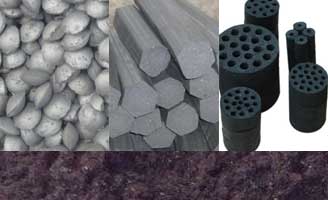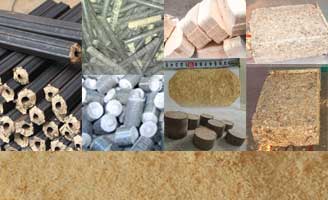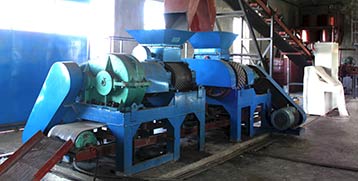Industrial coal coke briquette making process, briquetting machine, binder, etc
What is the industrial coal coke briquette
The industrial coke is made of pulverized coal as raw material, processed by coals blending (or single coal) and then briquetting to briquette, after that through the coking process gets the coke and coke-type coal products.
The product with carbonization temperature around 600 degrees is coal coke (semi-coke type coal), and the product with carbonization temperature above 1000 degrees Celsius is coke.
The coke product can replace coke for blast kiln in ironmaking and steelmaking, and coking coal can be used as an ideal gas-making raw material for fertilizer plants.

The coke production process
Raw coke coal briquetting technology
Raw coke briquette mainly uses coke briquette machine with types of hot briquetting roller press or cold briquetting press.
Hot briquetting roller press process
For the coal material adopting the hot briquetting technology, pre-heat treatment is carried out before briquetting. That is, low-temperature carbonization treatment, so that the coal material can be briquette in the softening temperature range.
The general coal material pretreatment temperature is between 400-500 Celsius.
If there’s only one component, 100% of the coal, is heated and briquetted in a softened state, this briquette is called a binderless briquetting method.
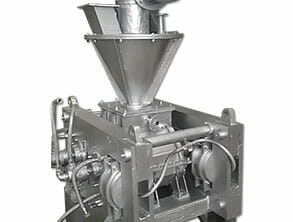
But one-component coal hot briquetting is hard to control.
If the raw coal is a two-component, then the main raw coal must be cohesive, it is firstly carbonized at a low temperature, and in its softened state, the secondary constituent coal must be uniformly blended into the hot coal before briquetting by the hot roller briquette machine. It actually acts as a binder.
After the hot briquetting, the briquette becomes carbonized and heat treated to become a coke product.
Cold briquetting process
The cold briquetting process does not require preheating of the raw coal.
Cold briquetting is available in two ways – binder way and binderless way.
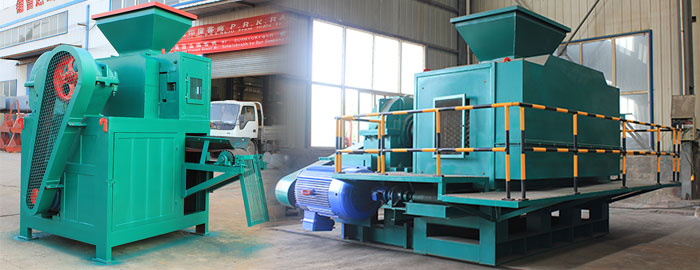
A typical example of a cold briquetting process without a binder is the lignite cold briquette making process. When lignite is used as raw coal, the characteristics of lignite are soft and plastic, and high-strength briquette is prepared by external force extrusion. This type of coal can be made into lignite coke by coking.
When coal with poor plasticities such as lean coal or anthracite is used as the main raw material, a small amount of cohesive coal may be blended or not, and briquettes may be prepared with or without binder, and then coke is formed by the high-temperature coking.
The cold briquetting process can use more unbonded (poor plasticity ) coal, and the process is relatively simple.

The common production process of coke
The production process of high temperature coking of lignite briquette
Two-steps production process
First to carbonize the coal to produce low-temperature semi-coke, and then pulverize, briquette and coking.
One-step production process
First, some of the coal is carbonized at a low temperature, then pulverize the carbonized semi-coke, and mix the semi-coke fine with the rest dried coal, then briquette and coking.
One-step process with binder
Briquette coal with binder and then coking.
One-step process without binder
Briquette coal with binderless way then coking.
The above four lignite coal coking process technologies, only the fourth method – the one-step process without binder is much important and industrialized in the process.
The coal used in this method is finely ground and has a particle size of less than 1 mm. This fine-sized coal is made into briquette by special production technology, which is very strong.
Dried to moisture with rapid air flow which gets coal fine of moisture less than 2%, the briquette is coked at 1000-1100 degrees Celsius.
This method is only suitable for the production of high temperature coke in young brown coal which is easy to briquette.
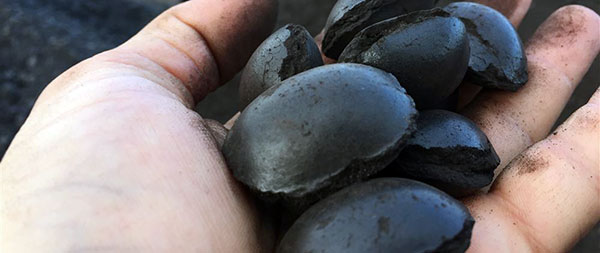
The production process of bituminous coal coke
The bituminous coal coke production process was mainly developed to broaden the range of coal types that can be used for coking.
The bituminous coal is converted into anthracite coal to produce coke having properties similar to conventional high temperature coke. This conversion is accomplished by one or more stages of the process and includes heat treatment or thermal oxidation of the raw coal.
There are a variety of raw coal heat treatment processes, such as the Anthracine method and the Coppee method. Both methods use an air-rich flue gas to oxidize raw coal at 300-350 degrees Celsius.
Production process of Chpw method bituminous coal coke
The method was developed in Poland using weakly bonded or non-bonded coal.
The production process is: coal drying and dehydration, degassing at 800 degrees Celsius, recovering the removed gas, and cooling by condensation to recover gas and oil, wherein the recovered bitumen is returned as a briquette making binder.
The degassed coal is semi-coke, it is broken into 3-4mm particle size, and briquetted with binder, then oxidized at 200-300 degrees Celsius to obtain hardened briquette. Finally, the briquette is coked at a temperature higher than 1000 degrees Celsius and we get a satisfactory coke product.
The production process of DKS type coke
The production process was first developed by Japan, and the process was further refined with the German company Didier.
The production process uses non-cohesive coal as raw material. In most cases, the cohesive coal, coke breeze or petroleum coke mixture is added to the non-cohesive coal, and about 10% of tar or asphalt binder is added. The raw coal after cold briquetting process is carbonized in a horizontal chamber coke oven inclined at the bottom plate, and the heating method is external heat type, the coking time is as long as 10 hours, and the carbonization kiln flame temperature is about 1300 degrees Celsius.
Carbonization
The final product of briquette carbonization is the acquisition of smokeless fuels and cokes with various properties.
The carbonization of briquette is carried out under high temperature to produce combustible gases, hydrocarbons and other liquids, tars and cokes through the interaction of many chemical and physical properties of the briquettes themselves during carbonization.
Coal types and carbonization conditions affect the properties and yield of tar and the physical properties and reactivity of coke.
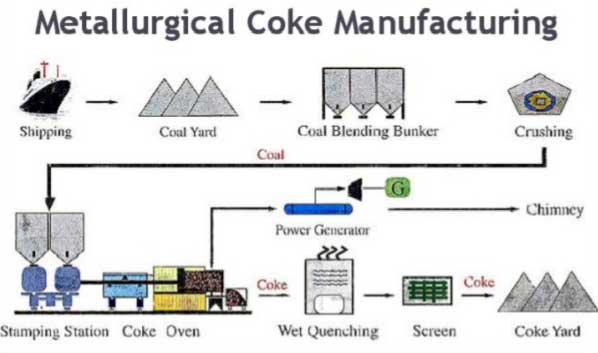
Carbonization temperature and carbonized product
The purpose of high-temperature carbonization of briquette is to obtain coke and by-products such as coal gas and coal tar.
The briquette is carbonized at a high temperature of 950-1100 degrees Celsius, and a series of changes occur in the briquette during the heating process in the carbonization kiln.
After the briquette is heated, the thermal decomposition begins, and the volatile matter escapes. When the temperature of the briquette reaches 300 degrees Celsius, the thermal decomposition products increase, mainly CO and CO2.
The temperature rises again, and three or more alkanes and alkenes appear.
When the temperature reaches 400-600 degrees Celsius, the decomposition reaches the most intense stage, and then slowly slows down, so the degassing of the briquette has an apex process.
When the briquette temperature is below 600 degrees Celsius, the degassed product is a primary product, and the quantity and variety of the primary products are related to the properties of the coal.
When the temperature in the carbonization kiln reaches 650 degrees Celsius or above, the briquette undergoes secondary thermal decomposition, and the primary degassed product is converted to the secondary degassed product.
When the temperature in the kiln is about 600 degrees Celsius, the amount of tar is the largest, so-called low temperature dry distillation tar. When the temperature in the kiln is higher than 650 degrees Celsius, the tar is decomposed and converted into high temperature tar.
The composition of low temperature tar and high temperature tar is different, and the utilization rate is very different.
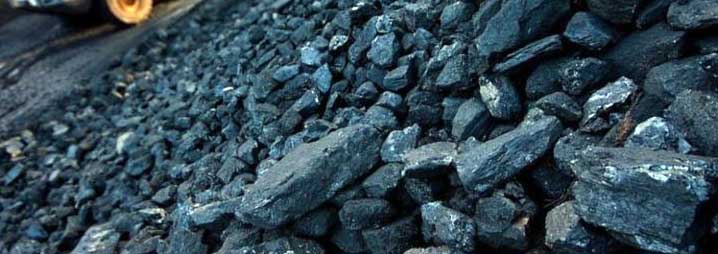
Low temperature carbonization and semi-coke
Semi-coke is a low-temperature carbonization product of coal briquettes, and produces low-temperature tar and low-temperature gas by-product.
Coal briquettes are sometimes required for low temperature carbonization to obtain the highest yield of tar, taking into account the quality of the semi-coke and gas.
The temperature of low-temperature carbonization is about 350-450 degrees Celsius lower than the temperature of high-temperature carbonization. Some scholars believe that the low-temperature carbonization temperature should be lower than 800 degrees Celsius. At a certain low carbonization temperature, the briquettes break under chemical and physical action into simple components, which are converted into tar, gas products, water and residual solids – semicoke.
High temperature carbonization and coke
The type of coke used is different, and the method of producing coke is different.
After briquetting, the briquette may be drying or semi-coking before the pre-sintering process, causing it to coke and heat at different temperatures greater than 1000 degrees Celsius to form a coke product.
The shape and specification of the coke can be determined as needed, and commonly used shapes are ball shape, brick shape, strip shape, etc., and the quality of the coal briquette coke is determined by the shape and size.
Low temperature carbonization and high temperature carbonization have different carbonization temperatures, raw materials, product yields and carbonization equipment.
The volatiles of the coke products obtained by high-temperature carbonization is about 2%. The coke is lustrous, the semi-coke volatile content is up to 10%, dull, with small strength, low carbon content. It can be used as a smokeless fuel or a synthetic gas raw material.
The tar yields and properties are also different of those two processes, and their respective uses are different as well.
Factors affecting coalification of coal
The quality of the coke or semi-coke is related to the many operating process conditions in the carbonization kiln.
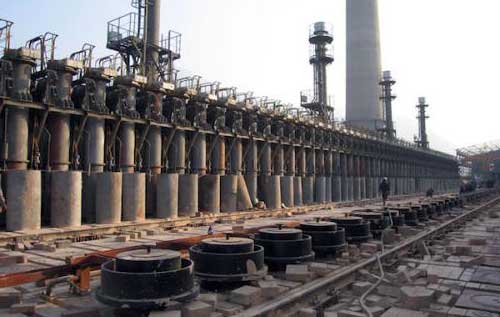
Heating rate and temperature in the carbonization kiln
The decisive factors affecting coal carbonization are the heating rate in the kiln, the duration of heating and the carbonization temperature in the kiln, and the composition and properties of the briquettes from the raw coal have an effect on the control conditions and final products of the carbonization process.
Critical temperature interval
The briquette produced from different coal types expands and shrinks during the carbonization process (heating process). The excessively fast heating rate causes the coal briquette to break or collapse.
The study found that there is a heating process in the “critical temperature interval”, the heating rate must be reduced in this temperature range to reduce the stress in the briquette structure, prevent the breakage of the briquette, and increase the final strength of the briquette.
Oxidation-hardening pretreatment
If tar pitch or petroleum pitch is used as the binder of the briquette, the briquette may be deformed during the heating process, or the briquette may be bonded together due to the exudation of the binder from the surface of the briquette.
The oxidation-hardening pretreatment can prevent this.
When the volatile content of briquette exceeds a certain value, the difficulty of carbonization will also increase, and it is generally pre-carbonized or solved by coal blending method.
Temperature change in carbonization kiln
When the temperature in the carbonization kiln is below 650 ° C, the reaction occurring in the kiln is a decomposition reaction. When the temperature in the kiln is higher than this temperature, it is a condensation reaction.
Some scholars have different views on the temperature boundary, but it is certain that the coal blending type and proportion of briquette determine the temperature boundary line of decomposition reaction and condensation reaction, and control the temperature change in the kiln to produce high quality coke products.
Conclusion
The coal briquette coking process can be used with almost any coal types: lean coal, weakly cohesive coal, unbonded coal, semi-anthracite, and anthracite. It can produce high quality coke that meets the quality standards required by metallurgical coke and foundry coke.
And this is a high-quality, low-pollution production method. The pollutants emitted in production are only 20% of the pollutants emitted by the traditional coking process, and the pollutants discharged are easy to control and recycle.
